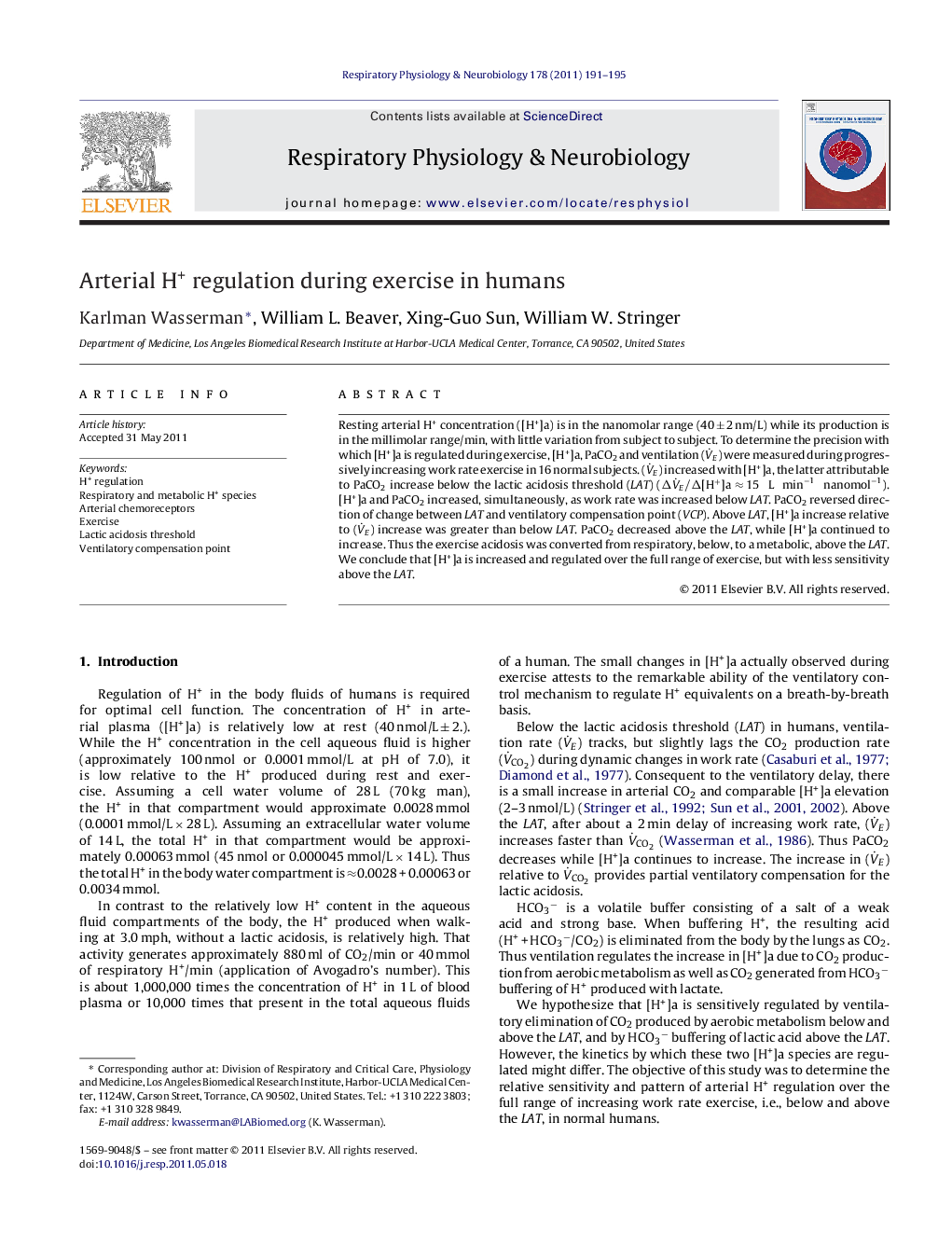| Article ID | Journal | Published Year | Pages | File Type |
|---|---|---|---|---|
| 5926457 | Respiratory Physiology & Neurobiology | 2011 | 5 Pages |
Resting arterial H+ concentration ([H+]a) is in the nanomolar range (40 ± 2 nm/L) while its production is in the millimolar range/min, with little variation from subject to subject. To determine the precision with which [H+]a is regulated during exercise, [H+]a, PaCO2 and ventilation (VËE) were measured during progressively increasing work rate exercise in 16 normal subjects. (VËE) increased with [H+]a, the latter attributable to PaCO2 increase below the lactic acidosis threshold (LAT) (ÎVËE/Î[H+]aâ15âââLâââminâ1ââânanomolâ1). [H+]a and PaCO2 increased, simultaneously, as work rate was increased below LAT. PaCO2 reversed direction of change between LAT and ventilatory compensation point (VCP). Above LAT, [H+]a increase relative to (VËE) increase was greater than below LAT. PaCO2 decreased above the LAT, while [H+]a continued to increase. Thus the exercise acidosis was converted from respiratory, below, to a metabolic, above the LAT. We conclude that [H+]a is increased and regulated over the full range of exercise, but with less sensitivity above the LAT.
⺠Arterial hydrogen ion ([H+]a) is tightly regulated during exercise (nanomolar range). ⺠VE increases with increasing [H+]a maintaining homeostasis and minimizing pH change. ⺠Below lactic acidosis threshold (LAT), (VËE) increased 15 L/min/nanomol [H+]a increase. ⺠Above LAT, (VËE) of CO2 from aerobic metabolism and HCO3- buffering regulated [H+]a. ⺠Increased (VËE) regulates [H+]a above and below LAT by controlled exhalation of CO2.
